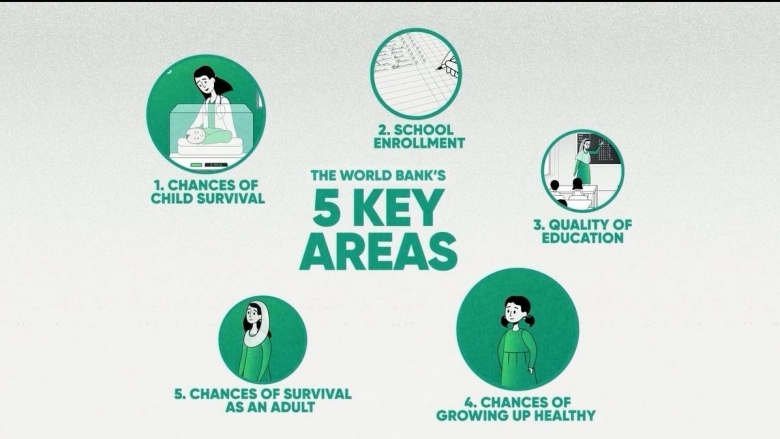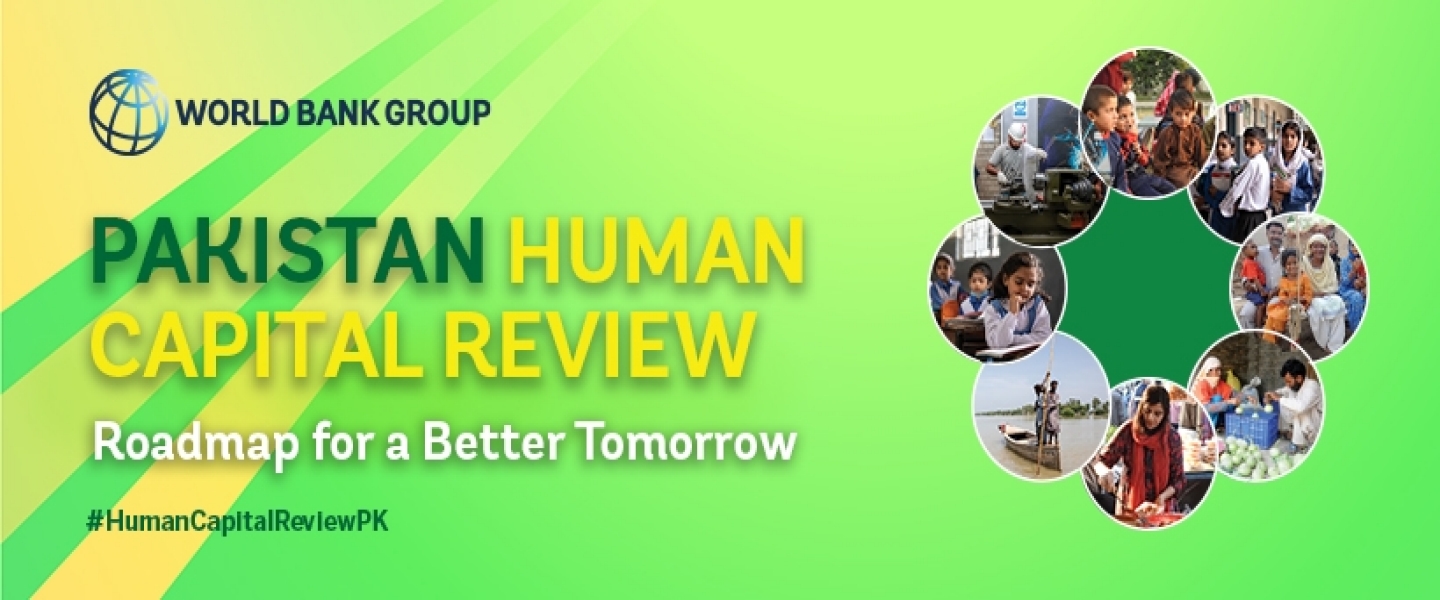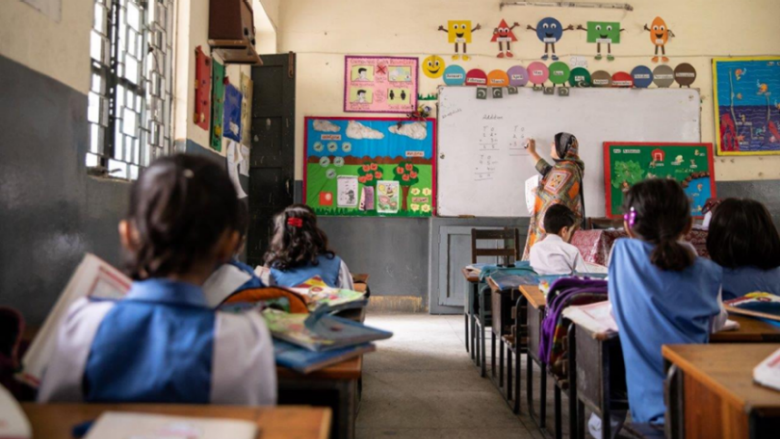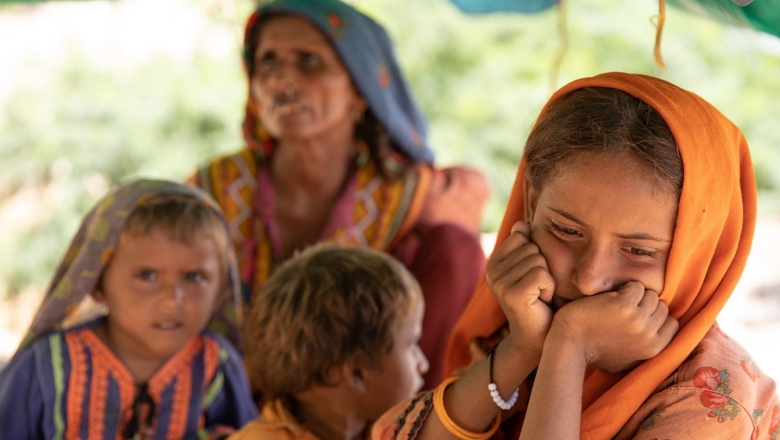Pakistan has reached middle-income status and made significant progress in reducing poverty over the past two decades. But low human capital development could limit the realization of its ambition to become an upper-middle-income country by 2047. Pakistan needs a healthy, skilled, and resilient population to ensure high economic growth that is both sustainable and inclusive. With the right policies and investments, the growing working-age population can become healthier, more educated, more skilled, and more productive—and can earn more if the economy generates more and better jobs.
Pakistan Human Capital Review: Building Capabilities Throughout Life
MULTIMEDIA

Pakistan can realize major economic growth and development by investing in its people and their human capital. But the reality is that Pakistan’s human capital is low and has improved only marginally over the past three decades. Inequalities in human capital outcomes have persisted or widened over time between the rich and poor, men and women, and rural and urban areas and among the provinces. Human capital outcomes are low across the board, with even the most economically advantaged groups in Pakistan having lower human capital outcomes than less economically advantaged groups in peer countries. Pakistan’s Human Capital Index (HCI) value of 0.41 is low in both absolute and relative terms. It is lower than the South Asia average of 0.48, with Bangladesh at 0.46 and Nepal at 0.49. Pakistan’s human capital outcomes are more comparable to those in Sub-Saharan Africa, which has an average HCI value of 0.40.
To enhance its human capital, Pakistan should adopt a life cycle approach to building, protecting, and deploying human capital, starting before birth, continuing through early childhood development, and schooling, culminating in increasingly productive employment. This calls for a long-term commitment, recognition of the multidimensional and cumulative nature of human capital investments, deliberate efforts from multiple stakeholders and sectors to build on intersectoral linkages, and a continuity of policies across political parties and governments. Many countries previously at Pakistan’s level of development have managed to precisely do this, even with regional variations and gaps just as large. Pakistan has the tools to implement the recommendations in this report, provide stewardship for human capital investments, and enhance economic growth over the long term. Pakistan’s handling of the COVID-19 pandemic has shown that the country can manage complex challenges, despite its institutional constraints.
Policy highlights
- Exercise effective stewardship over human capital and declare emergencies over its health and education crises. This requires long-term planning beyond the tenure of any government and political cycle. With the COVID-19 pandemic and devastating floods deepening its already poor state of human capital, Pakistan needs to declare emergencies and take bold actions to tackle its health and education challenges.
- Make family planning a priority across all human development initiatives. Pakistan should integrate population planning in academic, religious, and national policies and develop its labor market to accommodate the growing youth population. Key actions include training more Lady Health Workers to educate women on family planning, creating more awareness about the use of modern contraceptives, increasing the provincial health budget, and focusing on structural inequalities in access to health and education.
- Invest more and more smartly in people and develop avenues for them to deploy their human capital more productively. Human capital externalities and market failures provide a strong rationale for the government to invest in human capital. As in most developing countries, poor people in Pakistan stand to lose the most when the public sector fails to make these investments. To boost its human capital, Pakistan needs to invest more in the supply of health and education through domestic resource mobilization, shifting resources from costly energy subsidies and improving efficiency in the existing allocations to human development sectors.
- Improve child development and learning outcomes by integrating high-quality, contextually relevant parenting and behavioral change programs into existing health, social protection, and education platforms. Early interventions, including access to early childhood education, are vital to mitigate risks and promote protective factors that shape healthy brain development, yielding gains for future health, learning, and productivity.
- Make nutrition a national priority by focusing on strengthening stakeholder momentum and coordination—and on mobilizing financing and tracking spending and progress. It should formulate a national nutrition policy, address bottlenecks, and ensure convergence of sectoral interventions. That policy should address the immediate and underlying determinants of nutrition and prioritize the most vulnerable areas and populations with high-impact nutrition-specific interventions.
- Enhance enrollments and learning outcomes. More schools, particularly in rural areas and staffed with a higher proportion of female teachers, are needed to encourage girls’ education. In addition, safe transportation; adequate water, sanitation, and hygiene facilities; conditional cash transfers; and remedial learning programs are imperative to reduce the high number of out-of-school children in Pakistan.
- Support the labor market and human capital outcomes of the poor through multipronged interventions, including those anchored on cash transfer programs. The interventions require clear identification of the segment of the labor market that the program will target, the package of interventions to be bundled together, and the use of pre-existing national systems for targeting such programs as asset transfers and financial support for entrepreneurship.



